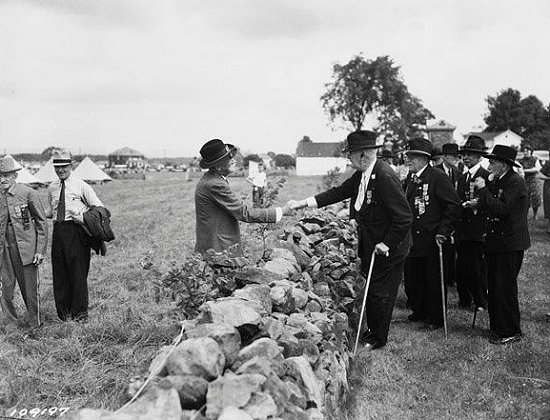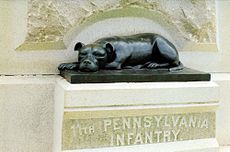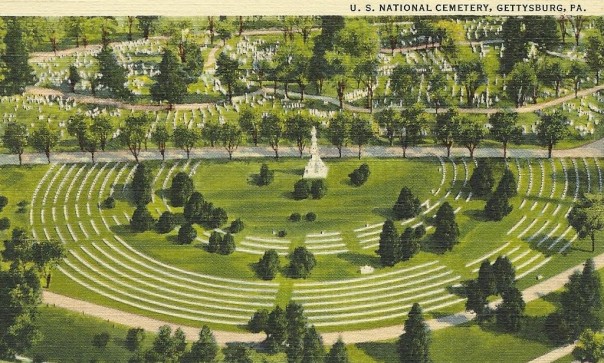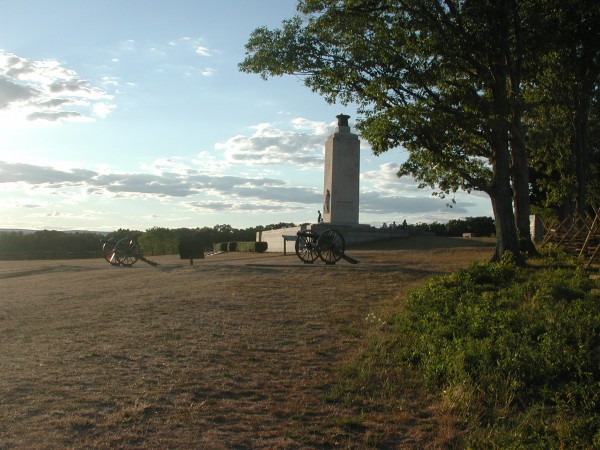Independence Day. Gettysburg. Then. Now. (And Sallie Ann)
“Of the people, by the people, for the people.”
The United States of America is a work in progress.
Civilization. “A civilization is generally defined as an advanced state of human society containing highly developed forms of government, culture, industry, and common social norms. Of course, not all scholars agree with this definition.”
Then-And-Now images place the past and present together for context.
William Frassanito pioneered the process at Gettysburg by piecing together geological forms and walking the fields, forests, byways.
From his Facebook page: “….. (he) has been studying Gettysburg and the Civil War since the age of nine. He graduated from Gettysburg College in 1968 and received his master's degree in American cultural history from the State University of New York at Oneonta. As first lieutenant in the U.S. Army, he served as an intelligence analyst for the Joint General Staff in Vietnam and was awarded the Bronze Star. He is also the author of Gettysburg: A Journey In Time (1975); Antietam: The Photographic Legacy of America's Bloodiest Day (1978); Grant and Lee: The Virginia Campaigns (1983); The Gettysburg Bicentennial Album (1987); Early Photography of Gettysburg (1995); Gettysburg Then and Now (1996); The Gettysburg Then and Now Companion (1997). Mr. Frassanito has served as the chief photographic consultant to numerous projects, including the National Historical Society's six volume photo history of the Civil War, The Image of War; and Time-Life Books' 28 volume series, The Civil War. He has appeared in a number of television broadcasts…”
Get one (or several) of his books (preferably before you visit). Online images are more numerous, but the research in Frassanito's books? Meticulous.
From the National Park Service: “…some of the “more unforgettable pictures of post-battle Gettysburg with modern versions taken from the same location as the originals. For many, these photographs conjure feelings of awe and amazement along with sadness and despair.
These feelings are often magnified when visitors realize they can stand on the same ground – and see the same things – that Alexander Gardner, Timothy O’Sullivan, and James Gibson did when they took their unforgettable images in July 1863. It is with these unforgettable photographs in mind, and a nod to the men whose timeless images evoke such strong emotions, that we bring you this page. This is our attempt to look back through the windows of time.”
For even more information – and photos held up to show the landscape of then and now – visit https://www.civilwar.org/learn/galleries/gettysburg.
To walk the fields and geological features at Gettysburg is unforgettable. Audio tapes help with understanding the landscapes and human history; licensed battlefield guides can provide even more insight.

Living history, shaking hands where they once battled ferociously. At the time of the 75th anniversary of the Battle of Gettysburg and of the Reunion of Confederate and Union Veterans, July 1-4, 1938, nearly 8,000 participants in the Civil War were still living. Of these, 1,845 attended the reunion. Union and Confederate veterans are here shown clasping hands across the stone wall at the Angle.
Not all on the battlefields had two legs. Horses, mules, and dogs were there, too.
“On July 1, 1863, the first day of fighting at Gettysburg, Sallie became separated from the regiment during the Union retreat to Cemetery Hill, and the soldiers feared she had been killed. But she had remained behind on Oak Ridge, where the 11th had fought on the first day, and it was there that she was found days later, still guarding her wounded and dead companions. Sallie was returned to her regiment and soldiered on until a few weeks before the war's end. On Feb. 6, 1865, during the Union advance at Hatcher's Run, Virginia, she was struck by a bullet and killed. Despite being under heavy fire, several soldiers put aside their arms to bury her on the spot.
“When the veterans of the 11th erected their monument at Gettysburg in 1890, a life-size bronze statue of Sallie was included on a granite pedestal in a place of honor at the front of the monument. Her statue lies below the towering bronze figure of a skirmisher, recalling the soldiers who fought beside her and whom she guarded on Gettysburg's fields.”

Loyal and true. Members of the 11th Pennsylvania Infantry remembered a canine companion with this monument to her. Wikipedia story about here linked to this image.
Having visited the battlefield and stopped to pay respect to those who honored those who fought beside them – will attest to the collection of remembrances left to “Sallie” – biscuits, toys, stones.
Update: Highlights from on the field live events with the Civil War Trust (CWT) are still viewable on their Facebook page. Recorded through July 3, 2017. For other planned CWT live on Civil War battlefields events, visit the Civil War Trust Facebook page.
For going to see fireworks in Connecticut, listings are available on the state's tourism site: www.ctvisit.com.
You'll pardon us as being not a fan of loud explosions. (It was not always this way.)
Be aware during celebrations that military personnel who served under combat situations and with live fire aren't fond of explosions and the percussions.
“PTSD and veterans with post-traumatic stress disorder are raising awareness about an unintended consequence of Fourth of July fireworks. A news clip (we've linked to the page here) does a fantastic job explaining fireworks, triggers, PTSD, and veterans reactions.”
Also, some dogs, horses, wildlife do not understand what sounds like impending doom. Many of them tremble in fear or run to escape the sounds and vibrations they feel as shock waves through the air. For dogs, try closing all windows and putting the air conditioning on high or using fans. That won't negate the percussive sound they feel, but may help. Try crating or ask your vet for advice.
Years ago our family dog knew when the fireworks would start and she would be frantic to get outdoors and run, run, run. The first time, she was fortunate to be found and scooped up by our city dog warden to be kept safe at the pound. It happened one other time years after – someone came to the front door and as the door opened a crack, she flew out to run, trying to escape the noise and her fear. She again was found – this time miles away from home, and she was safe (hoarse from barking) at the pound. After that experience, she was crated; paper signs were placed on any door, and those doors latched. The fear-drive flight was not repeated – and she lived to a ripe old age.


